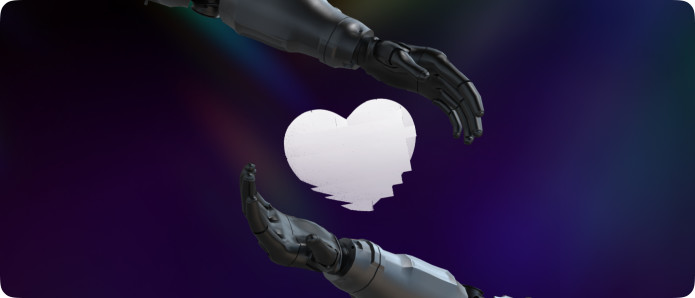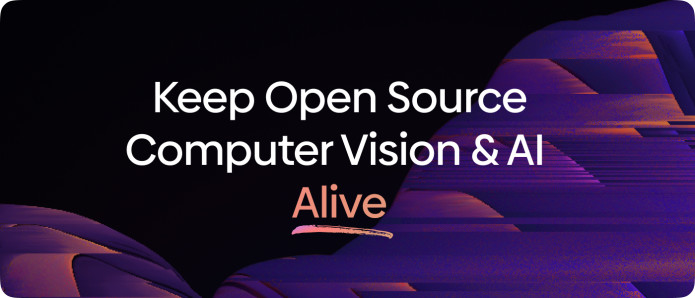In a world where only a few companies control the future of AI and many AI projects remain closed source, OpenCV stands out as a beacon of open source innovation. Since June 2000, the non-profit organization OpenCV has hosted the world’s largest computer vision library. This open source and freely licensed library is used everywhere—from rovers and satellite navigation in outer space to helping emergency rooms, farms, factories, and academic institutions.
Anticipated OpenCV 5 release imminent, but depends on critical success crowdfunding campaign Their team recently launched the project on Indiegogo. Facing the typical obstacles of non-profit and open source projects, this event is more than just a fundraiser. This is a call to technology enthusiasts and professionals who have benefited from OpenCV to play an important role in safeguarding its future.
In this exclusive interview, we had the opportunity to speak with their CEO Satya Malik Discuss the latest developments and insights about OpenCV 5, and explore the unique opportunities its crowdfunding campaign offers to backers and the wider community. Read on to learn more about this groundbreaking project!
INDIEGOGO: Please tell us more about OpenCV 5. Who is your crowdfunding campaign for?
Satya Malik: OpenCV is the world’s largest computer vision library and has been actively developed as open source software for over 20 years. It’s used in hospitals, farms, cars, self-driving cars, and pretty much everywhere computer vision is used. OpenCV is the “Swiss Army Knife” of classic computer vision and many modern artificial intelligence applications. The entire OpenCV code base is open source and freely licensed under Apache 2, which means developers can use OpenCV for almost any purpose for free.
According to industry reports, 89% of embedded vision engineers use OpenCV as their primary computer vision library. Stanley is one such project, which won the 2005 Autonomous Driving Challenge organized by DARPA. Stanley is now part of the Smithsonian Institution.
This event is suitable for anyone who has benefited from OpenCV or open source software and wants to contribute to making the most important advancements freely available to everyone. No matter what happens, OpenCV will continue – but will it be purely open? Only the community can help us answer this question.
What made you decide to crowdfund this version of an open source computer vision and artificial intelligence library?
Satya: OpenCV has an impressive range of OpenCV AI suite hardware and a successful crowdfunding campaign for our popular OpenCV course/college series of educational programs. Over the years, we’ve found that making a direct appeal to the OpenCV community, while taking their time and attention seriously, works very well.
Not many open source projects raise money directly this way, but our community is so large and dedicated that we decided to give it a try.
OpenCV has a rich history of cooperation with large companies such as Google. How have these collaborations shaped the development of OpenCV? What impact have they had on the computer vision and machine learning communities?
Satya: This is real. OpenCV started in June 2000 as an Intel project. With the help of Intel, OpenCV was able to optimize libraries for Intel processors and use Intel’s OpenVINO as one of the backends for the deep neural network module. We are currently in talks with several other large chip companies who would also like to see this kind of acceleration for their chips.
Google helps us through Google Summer of Code, where OpenCV hires some amazing interns to work on new projects paid for by Google. This program is essential for adding new functionality to the library.
Companies like Futurewei and Huawei support our efforts with cash donations.
Orbbec is one of our development partners helping OpenCV provide native support for its depth camera. Another development partner, Khadas, has enabled OpenCV DNN module acceleration for its Neural Processing Unit (NPU).
Over the years, our partners such as Microsoft Azure, Intel, Orbbec, Khadas and Roboflow have sponsored the OpenCV Artificial Intelligence Competition. As we speak, the 2023 edition is coming to an end.
OpenCV offers membership programs for companies with Bronze, Silver and Gold membership levels:
Running a project like OpenCV requires support not only from individuals, but also from companies that benefit from the library’s hard work. We hope to gain some new supporting members during the campaign. Enterprises please contact us!
Are there any unique perks or rewards for backers of this campaign?
Satya: The biggest boon for all backers will be the release of OpenCV 5 – the world’s most advanced open source computer vision library, free even for commercial use. We were lucky enough to have some OpenCV friends who signed up for the event, such as OpenMV, who offered OpenCV supporters a deal on the RT1062 camera, which is a great solution for embedded projects using MicroPython. One of our partners, Roboflow, is offering service discounts to OpenCV supporters. One of the benefits includes access to OpenCV courses. We appreciate their support and hope the community will take advantage of these offers.


Show your support for OpenCV 5 by contributing to the crowdfunding campaign on Indiegogo.
This crowdfunding campaign gives you the chance to join the movement shaping the future of artificial intelligence and computer vision. Let’s work together to make OpenCV 5 a reality and a community project.